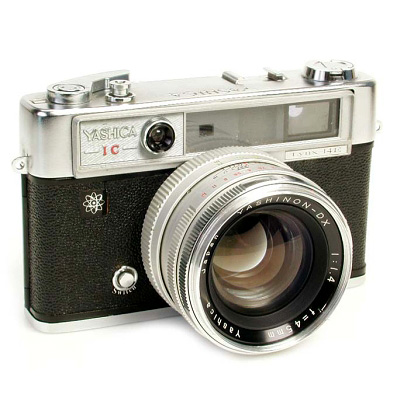
- #Yashica mat em vs minolta autocord cds iii how to#
- #Yashica mat em vs minolta autocord cds iii plus#
It must be remembered though that this is still a reflected reading and the meter assumes it is seeing an 18% grey whether the spot is placed on a lighter or darker tone than average. The spot is placed on an important subject area and reads the strength of the light reflected from that point. Type 3: Spot meters differ by measuring from a 1º or 4º area - a spot - seen through a simple viewfinder, like an SLR without film. For a highly directed approach to metering very small sections of your scene, there’s only one choice… These meters also typically use a “reflective” reading.

This is due to a legacy assumption that the important part of your photo will be in the middle of the frame. TTL meters are generally “weighted” to favour the middle of the scene. Type 2: Through The Lens (TTL) meters, which as the name suggests, meter the scene directly through the lens. These are very different from light meters which “see as the photographer does” through the viewfinders. You can find examples of these in cameras such as the Rolleiflex 2.8E, various Yashica-Mat TLRs, Olympus rangefinders and others. Many film older film cameras have built-in light meters which do much the same job as handheld light meters. Important detail in highlight or shadow details will be lost in the non-average images.A predominantly dark subject that will indicate overexposure.A mostly light subject that will give an underexposed reading.An average subject that will meter accurately.The examples below show how a film camera or handheld light meter approximately “sees” the three sample images and how it measures them to bring them all to the same tone as the first, leading to varying exposures in the non-average ones. This range of tones can vary between a few aperture stops in dull conditions - well within the film’s density range - to many more than the film can record in very bright conditions. In other words, a slightly dark, mid-grey, no matter how wide or narrow the range may be, ignoring details like colour and texture, as though the scene is being viewed through frosted glass. The basis of exposure assessment are the rated film speed (ISO) and intensity of light – I’m speaking about assessment, not the exposure triangle! An assessment is arrived at on the assumption that the range of tones in all scenes will average out to “middle grey” – a grey tone which represents 18% reflectance in visible light. Here, the flower head was the important element, so reducing the exposure by a couple of stops allowed more highlight detail to be captured at the expense of the even more blocked up shadows, giving a better rendering of the subject. The average meter reading (left) of 1/100 second at f/16 given lead to blown-out highlights and blocked shadows.
#Yashica mat em vs minolta autocord cds iii plus#
The example above, taken with an Ensign 12-20 and ILFORD FP4 PLUS was a scene with a wider tone range than the film could record. I’ve borrowed them from the Zone System - explained in brief later - but for the meantime, just consider them as a scale of tones from utter black to the birghtest white. The Roman numerals in the graphs below indicate the one-stop increases or decreases in brightness/shades of gray.

This dictates where the lightest negative density will be produced (the “fog” part being produced in the emulsion layers). Film emulsion is also coated on a base that is not always perfectly clear, so the starting point for a film’s sensitivity is what is called film base plus fog level, i.e. Generally speaking, a digital sensor records the darkest to lightest tones as a straight line graph, whilst film produces an S-curve as a result of development when the lightest and darkest parts of the graph are compressed slightly.

#Yashica mat em vs minolta autocord cds iii how to#
What is exposure? How to use light meters in film photography - EMULSIVE Close Search for:


 0 kommentar(er)
0 kommentar(er)
